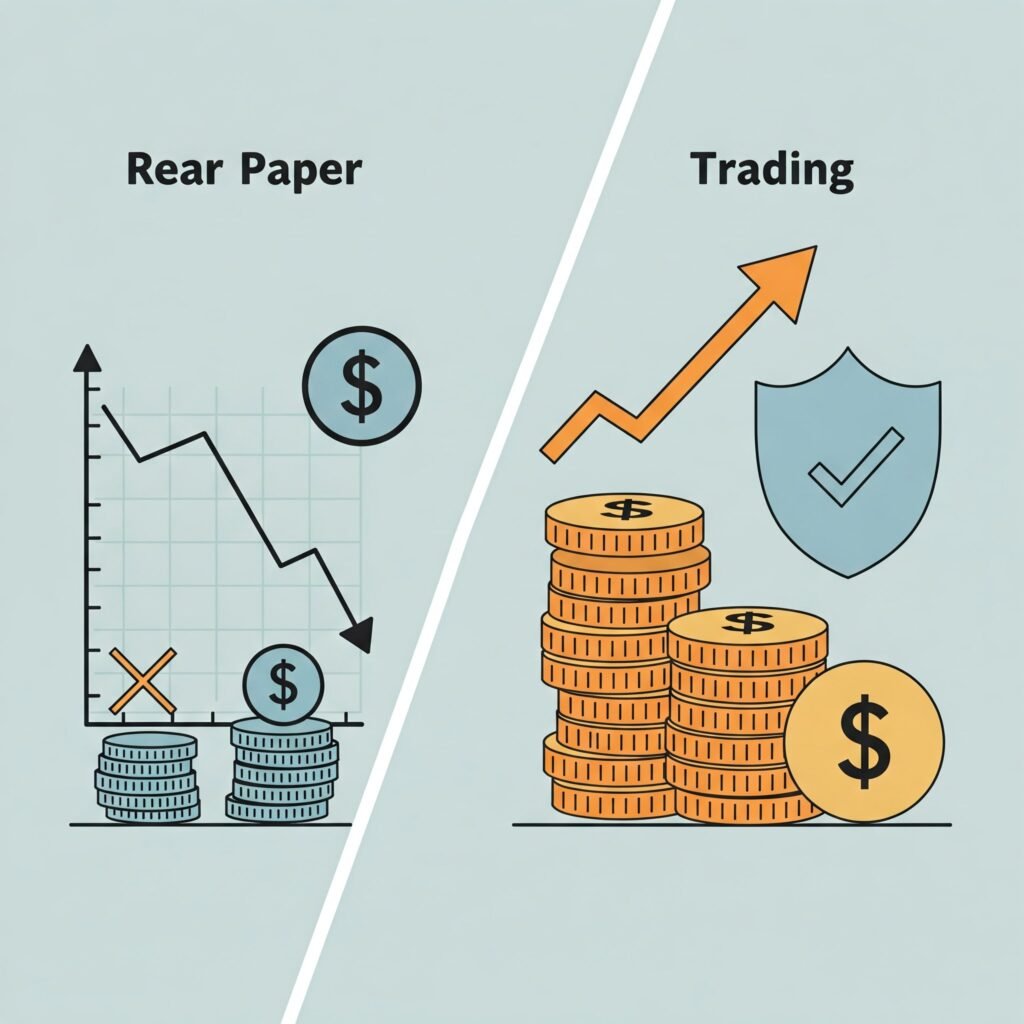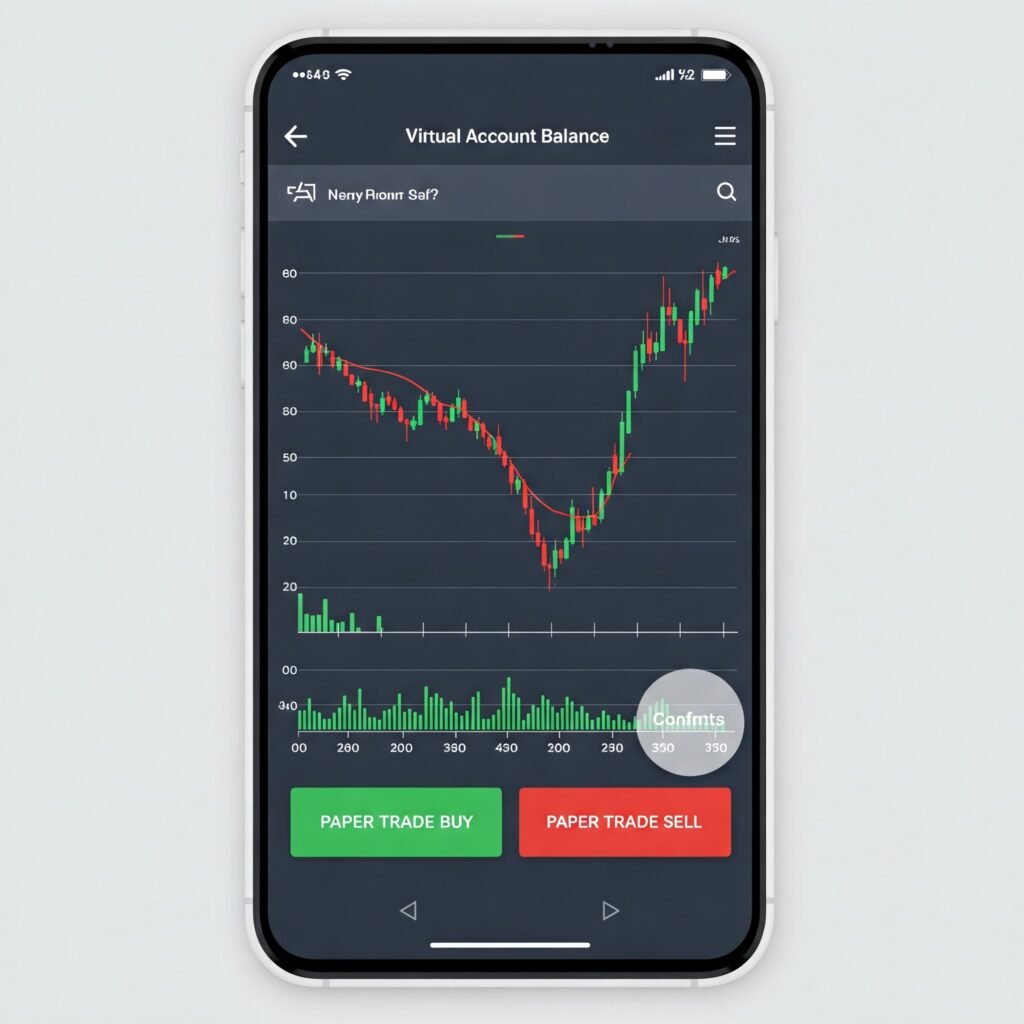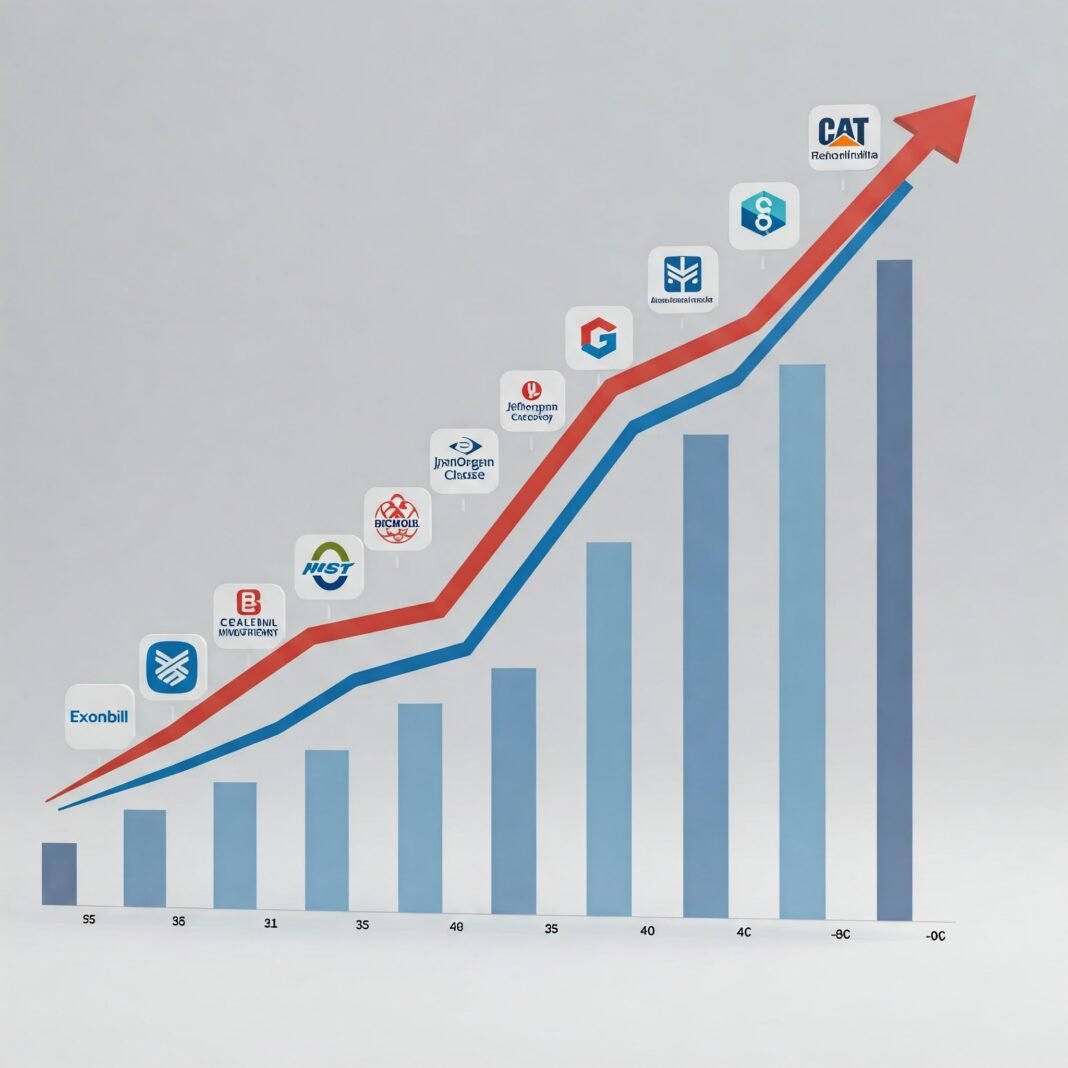That’s where best paper trading apps come in. Paper trading (also known as virtual trading or stock market simulation) allows you to trade with virtual money in a real-time or slightly delayed simulated market environment. It’s the ultimate sandbox for learning the ropes before you step into the real trading arena.
In this post, we’ll dive deep into why paper trading is essential, what to look for in a simulator, and review some of the best paper trading apps available today. By the end, you’ll be equipped to choose the right platform to kickstart your risk-free trading journey.
What is Paper Trading and Why Use Paper Trading Apps?
At its core, paper trading is simulated trading. Historically, people would literally write down their hypothetical trades on paper (hence the name). Today, sophisticated software and paper trading apps replicate the experience digitally. You get a virtual cash balance – say $100,000 – and you use this money to place trades just as you would in a live brokerage account.
The “why” is simple and critical: practice without risk. The stock market can be volatile and complex. Jumping in with real money without understanding how orders work, how to read charts, or how your emotions affect decisions is a recipe for losing money fast. Paper trading apps provide a safe space to:
- Learn the platform’s interface.
- Experiment with different trading strategies (day trading, swing trading, value investing).
- Understand market orders, limit orders, stop losses, and other order types.
- Get a feel for market volatility and execution.
- Build confidence before committing real capital.
Think of it like a flight simulator for pilots. They don’t jump into a real plane without hours in the simulator, and you shouldn’t jump into live trading without significant practice via paper trading apps.

How to Choose the Best Paper Trading Apps
Not all virtual trading platforms are created equal. To find the best paper trading apps for your needs, consider these factors:
- Realism: Does the simulator use real-time or near real-time market data? Does it accurately reflect spreads, commissions (even if virtual), and execution nuances?
- Features: Does it offer the same tools as a live trading account? Look for charting tools, technical indicators, news feeds, watchlists, and various order types.
- Asset Availability: Can you paper trade the assets you’re interested in (stocks, options, futures, forex, crypto)?
- Platform Accessibility: Is it available on desktop, web, and mobile devices? Is the interface intuitive and easy to navigate, especially for beginners?
- Virtual Capital: What is the starting virtual balance? Can you reset it?
- Educational Resources: Does the platform offer guides, tutorials, or courses to help you learn?
- Cost: Many brokers offer free paper trading with a funded (or even unfunded) account. Dedicated simulators might have a fee, though some free options exist.
Choosing the right simulator aligned with your future trading goals is crucial for effective practice. To better understand the terms like ‘technical indicators’ or ‘order types’, consider exploring reliable financial education resources online. [Outbound Link: Investopedia – Trading Basics]https://www.investopedia.com/articles/trading/05/011705.asp
Top Picks: Best Paper Trading Apps
Based on features, realism, and user experience, here are some of the leading paper trading apps and platforms:
Thinkorswim (TD Ameritrade / Charles Schwab) – A Top Paper Trading App for Serious Practice
Thinkorswim, now part of Charles Schwab, is widely regarded as one of the most robust trading platforms available, and its paper trading functionality is top-notch.
- Features: Offers a highly realistic simulation environment mirroring their professional-grade platform. Access to advanced charting, a vast array of technical indicators, options analysis tools, futures trading, and even simulated forex. Uses real-time data.
- Pros: Extremely powerful and realistic, excellent for practicing complex strategies, available on desktop, web, and mobile.
- Cons: Can be overwhelming for absolute beginners due to its feature density.
- Ideal User: Anyone planning to use a professional-level platform, active traders, options traders, futures traders.
- Access: Typically available with a Charles Schwab account. Learn more about their platform: [Outbound Link: Charles Schwab Trading Platforms]
Fidelity – Another Leading Paper Trading App Integrated with Brokerage
Fidelity offers its Active Trader Pro platform with a simulated trading mode, providing a solid environment for practicing stock and options trading.
- Features: Integrated directly into their trading platform, offering real-time data, comprehensive charting, research tools, and options chains for practice.
- Pros: Seamless transition if you plan to trade with Fidelity, user-friendly for beginners, good research resources.
- Cons: Simulator features might be slightly less extensive than dedicated professional platforms like Thinkorswim for niche strategies.
- Ideal User: Beginners and investors who plan to use Fidelity for their actual trading.
- Access: Available with a Fidelity account. Explore Fidelity’s trading tools: [Outbound Link: Fidelity Trading Tools]
Interactive Brokers (IBKR) – Great Paper Trading App for Global Assets
Interactive Brokers is known for its wide range of assets and global market access, and their paper trading account reflects this, using their Trader Workstation (TWS) platform.
- Features: Allows you to practice trading stocks, options, futures, forex, bonds, and funds across numerous global markets. Uses real-time market data. Provides access to TWS, a powerful, professional platform.
- Pros: Excellent for practicing multi-asset and global trading strategies, highly realistic execution simulation.
- Cons: TWS can be complex for new users.
- Ideal User: Traders interested in multiple asset classes or international markets, experienced traders looking to test new strategies.
- Access: Available with an Interactive Brokers account. Find out about IBKR’s paper trading: [Outbound Link: Interactive Brokers Paper Trading Information]
TradingView – A Popular Platform with Paper Trading App Functionality
While primarily known for its charting tools and social network for traders, TradingView also offers a paper trading integration.
- Features: Practice trading directly from their advanced charts. Connects to various simulated brokerage accounts (like their own built-in one or compatible brokers). Excellent charting tools and community features.
- Pros: Best-in-class charting experience, great for practicing technical analysis-based strategies, accessible via web and mobile.
- Cons: The simulation itself might be less focused on detailed account management nuances compared to broker-specific platforms.
- Ideal User: Traders who heavily rely on technical analysis and charting, those who value a strong charting community.
- Access: Free and paid plans available, paper trading is available even on free plans. Check out TradingView’s platform: [Outbound Link: TradingView Homepage]

Benefits of Using Paper Trading Apps for Practice
The advantages of using paper trading apps extend beyond just avoiding financial loss:
- Risk-Free Learning: The most obvious benefit. Make mistakes without paying for them.
- Strategy Testing: Develop, refine, and test trading strategies under realistic market conditions.
- Platform Familiarization: Learn the ins and outs of your chosen trading platform before using it live.
- Build Confidence: Gain comfort with placing orders, managing positions, and reacting to market movements.
- Understand Market Mechanics: See how news, economic data, and events impact prices in real-time.
- Track Progress: Monitor your simulated portfolio performance to see what’s working and what isn’t.
Getting Started with Paper Trading Apps: Tips for Success
Simply having a paper trading app isn’t enough. To get the most out of your practice:
- Treat it Like Real Money: This is crucial. Don’t take irrational risks just because it’s not real money. Trade as if every dollar in the simulator is yours.
- Define Your Strategy: Have a clear plan (what to trade, when to enter, when to exit, how much to risk per trade) before you start.
- Analyze Your Trades: Keep a trading journal (even for paper trades). Record your reasons for entering and exiting trades, the outcome, and what you learned. Analyze both winners and losers.
- Be Consistent: Dedicate regular time to practice, just as you would for live trading.
- Set Realistic Goals: Don’t expect to turn your virtual $100k into $1 million overnight. Focus on executing your strategy well and managing risk.
- Don’t Over-Leverage: Avoid using excessive margin in the simulator if you wouldn’t use it in real life.

Potential Drawbacks of Paper Trading Apps
While incredibly valuable, paper trading apps do have limitations:
- Lack of Emotion: This is the biggest difference. The fear of losing and the greed of winning are powerful psychological forces in real trading that are absent in simulation. Understanding trading psychology is key before transitioning to live trading. [Outbound Link: Behavioral Finance Overview]
- Execution Differences: Slippage (the difference between your expected trade price and the executed price) and order fills can behave slightly differently in a simulator compared to high-volume, live trading, especially for large orders or volatile stocks.
- Can Foster Complacency: Success in paper trading doesn’t guarantee success in live trading. Don’t become overconfident.
Paper Trading Apps vs. Real Money Trading
The transition from paper trading apps to real money is significant. While the mechanics are the same, the psychological element is profoundly different. Your emotional responses to gains and losses will impact your decision-making.
Start with a small amount of real money after successful paper trading. The goal of paper trading is not just profit simulation, but mastering the platform, testing your strategy, and building consistent habits before emotions are fully in play.
Conclusion: Choose the Right Paper Trading App for You
Paper trading apps are an indispensable tool for anyone serious about learning to trade stocks and other assets. They offer a risk-free environment to practice, learn, and build confidence.
Whether you need a simple interface to get started or a powerful platform to test complex options strategies, there’s a paper trading app out there for you. Explore the options mentioned above, consider your learning style and future trading goals, and start practicing today. Your future trading success depends on the preparation you put in now!





